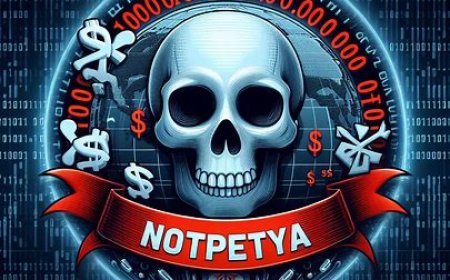Stuxnet: Coordinated Cyber Attack on Nuclear Infrastructure
The identity of the perpetrators of Stuxnet cannot be definitively confirmed, but the attack is believed to be the result of collaboration between the United States and Israel. Stuxnet was designed to sabotage Iran's nuclear infrastructure, particularly its uranium enrichment program. While there has been no official acknowledgment from the U.S. or Israeli governments regarding their involvement, several reports and analyses suggest that both countries collaborated in this cyber campaign. In a book published in 2014, The New York Times reported that Stuxnet was part of a covert program called "Olympic Games," a joint effort between the U.S. National Security Agency (NSA) and Unit 8200, the Israeli military intelligence unit. While this cannot be officially confirmed, many cybersecurity experts and intelligence officials consider the United States and Israel as the primary actors behind Stuxnet.

Discovered in 2010, Stuxnet became one of the most sophisticated and impactful cyber attacks in history. Originating as a worm, Stuxnet stood out due to its highly specific target and destructive consequences. The primary objective of Stuxnet was to sabotage Iran's nuclear infrastructure, particularly its uranium enrichment program, perceived by many as a global security threat. Developed with extraordinary precision, Stuxnet exploited zero-day vulnerabilities, making it difficult to detect and address. A distinctive feature was its propagation through USB flash drives, automatically copying itself when inserted into a computer connected to the targeted system. The worm specifically targeted industrial control systems using Siemens Step7 software and Siemens PLC hardware, showcasing a profound level of expertise. Stuxnet had three main modules: propagation, injection, and control, working together to infiltrate, spread, and then damage the intended systems. Apart from its technical sophistication, Stuxnet left a lasting impact by damaging Iran's nuclear facilities, especially the Natanz site.
Though not completely halting Iran's nuclear program, Stuxnet significantly delayed its progress. Here is the main timeline of Stuxnet, the cyber attack targeting Iran's nuclear infrastructure:
1. Development (Before 2010): Stuxnet is believed to have been developed by a government entity or intelligence group, with the development process likely starting several years before its attack.
2. Initial Spread (2009-2010): Stuxnet was first detected in 2010, although many experts believe the worm had been circulating since 2009 or even earlier. Its spread involved USB storage media, aiding its infiltration into the target systems.
3. First Infection in Iran (2009-2010): While spreading to various computers worldwide, Stuxnet seemed to target Iran's nuclear systems, particularly the uranium enrichment facility at Natanz. The initial infection in Iran likely occurred through a USB device used by someone with access to the facility.
4. Specific Targeting Development (Before 2010): Stuxnet was designed to target industrial control systems, specifically Siemens PLC hardware and Step7 software used in nuclear facilities. This indicated that Stuxnet's creators had in-depth knowledge of Iran's nuclear infrastructure.
5. Active Attack (2010): Stuxnet began showing real impact in 2010. In June 2010, Iran reported serious technical issues at the Natanz uranium enrichment facility, though there was no confirmation at that time that Stuxnet was the cause.
6. Public Disclosure (July 2010): In July 2010, Belarusian cybersecurity company VirusBlokAda and Iranian cybersecurity firm Maher Center announced the discovery of Stuxnet. This publication opened the world's eyes to a highly sophisticated and targeted cyber attack.
7. Further Analysis and Detection (August 2010): Following the disclosure, cybersecurity researchers worldwide started to analyze Stuxnet further to understand its workings and impact. It was found that Stuxnet had three main modules for infiltration, spreading, and controlling the target systems.
8. U.S. and Israel Confirmation (2012): In 2012, reports from various sources suggested that Stuxnet was part of a joint cyber campaign between the United States and Israel to hinder Iran's nuclear program.
The timeline of Stuxnet reflects a highly coordinated cyber attack designed with great sophistication to damage critical infrastructure globally. While not fully stopping Iran's nuclear program, Stuxnet succeeded in delaying its advancement.
The Stuxnet attack had significant impacts on various levels, especially in cybersecurity, international relations, and Iran's nuclear infrastructure. Here are some main impacts of the Stuxnet attack:
1. Damage to Iran's Nuclear Infrastructure
Stuxnet was specifically designed to damage the hardware and software used in Iran's nuclear facilities, particularly at the uranium enrichment facility in Natanz. The attack caused physical damage to the uranium enrichment center by manipulating the industrial control system that regulates the centrifugal separation of uranium isotopes.
2. Increased Awareness of Cybersecurity
Stuxnet drew global attention and raised awareness among various parties, including governments, cybersecurity agencies, and industries, about the potential dangers of cyber attacks on critical infrastructure.
The success of Stuxnet motivated other cyber attackers to develop more sophisticated techniques to infiltrate systems deemed secure.
3. Increased Diplomatic Tensions
While official U.S. and Israeli sources did not openly acknowledge their involvement in Stuxnet, many reports and analyses implied their participation. The consequence was heightened diplomatic tensions between Iran, the United States, and Israel, especially concerning Iran's nuclear program.
4. Better Understanding of State-Sponsored Attacks
Stuxnet was an early example of a cyber attack initiated by a state or intelligence group with political and military objectives. The success of Stuxnet provided valuable lessons about the potential damage that state-sponsored cyber attacks could cause.
5. Changes in Nuclear Security Strategy
Stuxnet prompted Iran to enhance its cybersecurity strategy and protection of critical infrastructure, especially in the nuclear sector. This incident also prompted many countries to strengthen their cyber defenses and recognize the urgency of protecting critical infrastructure.
6. Emergence of New Threats
Stuxnet paved the way for more sophisticated and targeted cyber threats, demonstrating that the danger of cyber attacks is not just a theoretical threat but can manifest in real attacks on vital infrastructure.
7. Ethical and Legal Debates
Attacks like Stuxnet raised ethical and legal questions regarding the use of cyber weapons by states. These debates evolved into broader global issues about norms and rules in international cybersecurity.
By causing concrete damage to nuclear infrastructure and creating lasting effects across various sectors, Stuxnet remains a significant milestone in the history of coordinated and targeted cyber attacks. The worm triggered global awareness of the cyber threats to critical infrastructure, sparking discussions about the ethical and legal implications of state-sponsored cyber weapons. Stuxnet continues to be a prime example of the challenges in detecting and addressing sophisticated cyber attacks aimed at highly specific targets, emphasizing the need for improved security in industrial control systems. Its success paved the way for the development of more advanced and impactful cyber threats in the future.
The identity of the perpetrators of Stuxnet cannot be definitively confirmed, but the attack is believed to be the result of collaboration between the United States and Israel. Stuxnet was designed to sabotage Iran's nuclear infrastructure, particularly its uranium enrichment program. While there has been no official acknowledgment from the U.S. or Israeli governments regarding their involvement, several reports and analyses suggest that both countries collaborated in this cyber campaign. In a book published in 2014, The New York Times reported that Stuxnet was part of a covert program called "Olympic Games," a joint effort between the U.S. National Security Agency (NSA) and Unit 8200, the Israeli military intelligence unit. While this cannot be officially confirmed, many cybersecurity experts and intelligence officials consider the United States and Israel as the primary actors behind Stuxnet.
(source: chatgpt)
What's Your Reaction?























































